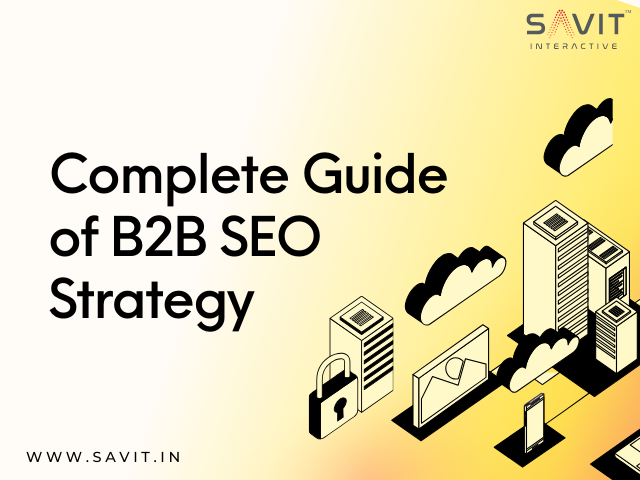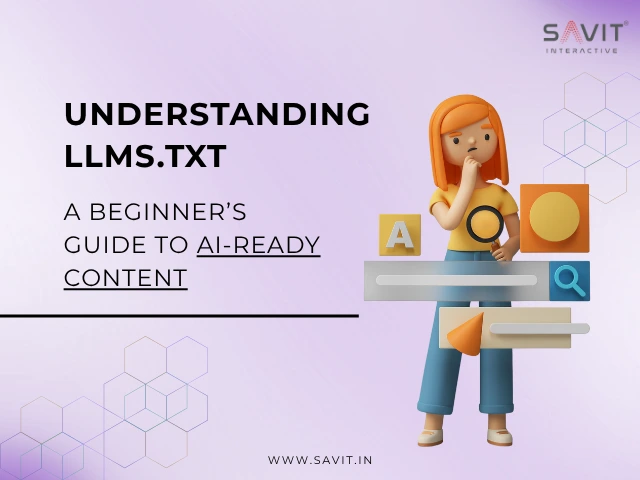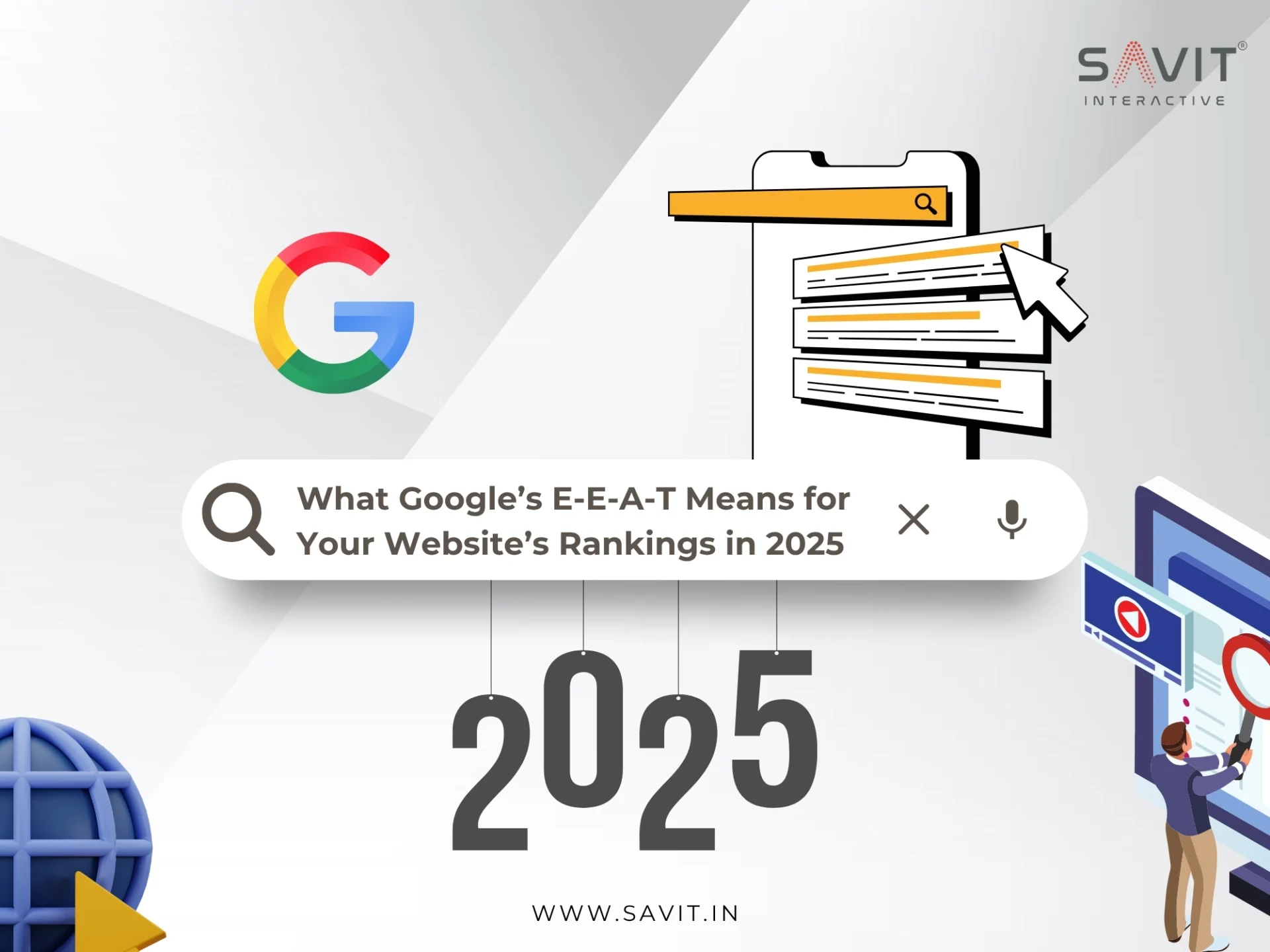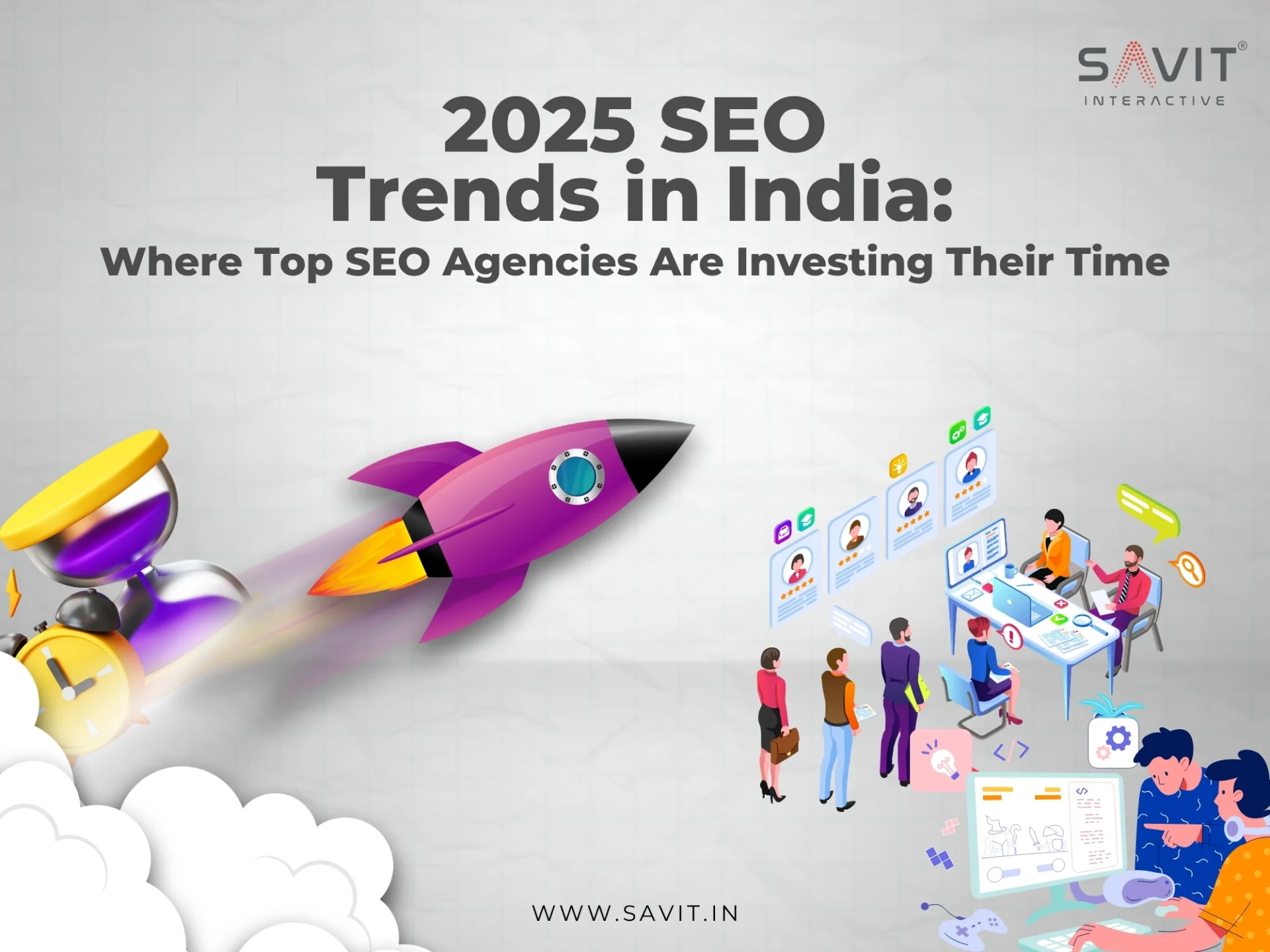For B2B businesses, SEO is one of the most crucial methods of acquiring new clients. Strong organic visibility at every point of the purchase cycle is a tried-and-tested strategy for quickening growth. However, where do you even begin when creating a B2B SEO strategy?
In this blog we will explore the B2B SEO in detail and the best practices to follow for a successful business.
What is B2B SEO
Business-to-business (B2B) SEO is a strategy aimed at increasing organic search engine traffic and keyword rankings for B2B websites. A successful B2B SEO strategy places a business’s website in front of people actively looking to engage with the services they offer or buy the products they sell. B2B search engine optimization (SEO) is a digital marketing strategy designed to help B2B website pages rank higher in search engines
The goal of business-to-business (B2B) SEO is to raise the organic search engine traffic and keyword rankings of websites that cater to other businesses. A business’s website is visible to consumers who are actively seeking to interact with its offerings or make purchases thanks to an effective B2B SEO campaign.
Furthermore, the fundamentals of SEO are still the same for B2B transactions as they are for B2C transactions, which include businesses purchasing from one another. These fundamentals consist of:
- On-page SEO
- Off-page SEO
- Technical SEO
- Content
However, B2B SEO presents different set of challenges. This have to do with the target market you are promoting to. Purchasing on behalf of a company differs greatly from purchasing for oneself. Let’s examine these differences and then go over the detailed plan you need to follow in order to be successful when using B2B SEO services.
The Difference Between B2B SEO and B2C SEO
Very first question that crosses one’s mind is- Does SEO differ for B2B compared to B2C? Sort of. SEO in B2C and B2B are same with regards to Google’s real ranking variables. To simply state, there isn’t a “B2B algorithm” or any extra actions required for B2B websites to rank well in Google. Furthermore, B2B and B2C use the same SEO best practices. However, B2B SEO is actually extremely different in practice.
Your target market in business-to-business transactions do not usually have wide demographic (such as “new moms” or “people that want to lose weight”). Typically, in a B2B setting your target audience consist of selected few company decision-makers. Marketing managers or CEOs or tiny companies seeking for fresh accounting software might be involved here. In terms of SEO, this is a massive difference. B2C websites, for instance, typically target keywords that receive thousands of monthly searches. However, you may aim for a term that receives 50 searches per month perhaps even ten. Additionally, compared to B2C, your content marketing will typically be very different. If you are in the B2C space, posting videos on TikTok could be a wise decision. For a B2B website that offers HVAC systems, though? Most likely, social media makes no sense. You may want to concentrate your content marketing efforts on email marketing and blogging instead.
Steps to build effective B2B SEO Strategy
Step 1: Create Your Buyer Persona
Identifying who you will target with your SEO is the main objective here and the first step in developing a B2B SEO strategy. This “who” is quite obvious in B2C: it’s your customer. Therefore, if you offer tennis shoes, you will exclusively target tennis players with your marketing. Easy. However, this phase is a little bit more difficult in the B2B environment. You are not targeting a human consumer. It’s an enterprise. Therefore, you must determine “who” in that company you need to approach. In this manner, you can ascertain the kinds of Google searches they conduct.
Also referred to as “keyword research. Based on this buyer persona may be a product manager, a CFO, or an inventory control officer, depending on your company. You can develop a persona for your target audience with the use of the Make My Persona tool.
- You need to give your Persona an avatar and a name in order to use it.
- Next, enter some basic business, career, and demographic data.
- You will have a thorough persona in the end that you can use as a starting point.
Creating a targeted marketing approach will be made easier with greater data about your buyer profiles.
Step 2: Perform Technical SEO Audit
Do a technical SEO audit on your website before making any new additions to ensure that any problems can be quickly resolved and that the areas that require more work are highlighted. You can complete an SEO audit by looking at the following:
- Look for 404 errors:
Finding and fixing broken links is an essential part of the search engine optimisation audit. Even though Google doesn’t penalise you directly for broken links, the higher bounce rate might nonetheless negatively impact your rankings. You can identify these broken links and fix them before they seriously harm your SEO results by using tools like Google Search Console.
- Sitemap for audits:
XML sitemap audits are a great approach to boost your search engine optimisation. An XML sitemap indicates the precise location of each page on your website to search engines, which aids in their understanding of it as they crawl it. Additionally, it includes insightful details about every page on your website, such as:
- When was a page last edited?
- What rank it holds on your website.
- The frequency of its updates.
- Verify analytics tracking twice:
When it comes to SEO, data is king. Verify again that your analytics tools are operating as intended and provide you with up-to-date data on the state and positioning of your pages. In the event that you don’t already have one, you can submit your website to Google Analytics, Google Search Console, and Bing Webmaster Tools for free in order to have it indexed by these search engines. With these services, you can also monitor the overall search engine performance of your website. Moreover, these tools let you:
- Try using your website on a mobile device.
- Check the backlinks directing traffic to your website.
- Disavow links that are spam.
- Look for HTTPS:
Google declared in 2014 that they wanted to see HTTPS on all websites and that secure websites will score higher in search results than insecure ones like HTTP. Companies need to make sure that their website is HTTPS safe. You may do this by installing an SSL certificate on your website.
- Core Web Vitals analysis:
Core Web Vitals, one of Google’s most recent algorithmic changes for page experience, became operative in 2021. Three crucial search signals are measured and tracked by Core Web Vitals:
- Largest Contentful Paint (LCP): The rendering time of your website’s largest picture or text block.
- First Input Delay (FID): The interval of time that passes between a user’s initial interaction with a page and the browser’s processing of that interaction.
- Cumulative Layout Shift (CLS): The frequency with which a webpage changes as a user is interacting with it.
You can enhance the functionality and user experience of your web pages by comprehending and enhancing these metrics on your website.
- Internal Linking:
One method of search engine optimisation that might help you improve your organic search engine ranking is internal link building. One of the main ways search engine algorithms assess a page’s relevancy is through links. Internal links placed throughout your pages can serve as a visual cue to visitors that the information is worthwhile and can increase traffic to your website.
- Harmful backlink analysis:
Backlinks are connections to other websites from links on yours. They can help to establish your store’s authority and trustworthiness with search engines, and they are crucial to your SEO and high search engine rating in Google and other search engines. Examine the backlinks pointing to your website while conducting an SEO audit. In this case, quality matters more than quantity because anything associated with your name or website has the potential to damage your reputation or trustworthiness.
- Examine the metadata for the content:
Effective Search Engine Optimisation for merchants depends on the use of metadata, which is a description of HTML elements that connect directly with search engines and make website information more understandable to them. These components, which can express goals, traits, and overall content, include page titles, description tags, and other protocols. An effective technique for specialising and focusing on possible e-commerce audiences is content metadata. You are letting Google do the hard work of driving traffic to your website by providing them with information on the type of content you have.
- Examine the speed of the website:
Sites that load quickly are preferred by search engines, and page speed is a key ranking factor. There are numerous approaches to make your website faster:
- Make use of quick hosting.
- Opt for a quick DNS provider.
- Reduce the number of HTTP requests.
- Instead of using inline CSS or several CSS stylesheets, use a single CSS stylesheet.
- Make sure your picture files are as compact as they may be.
- Reduce the size of your webpages.
- Remove any extraneous line breaks, spaces, or indentations from your HTML, CSS, and JavaScript to optimise the code of your website.
- Verify the canonical URLs:
Since duplicate content and URLs are frequently exploited to influence search ranks or increase traffic, they can cause confusion for search engine algorithms. As a result, in order to prevent any fines, Google and Bing advise webmasters to address any duplicate content issues they discover. Problems with duplicate content can be fixed by:
- Preventing different versions of a page or post from being published by your CMS.
- Letting search engines know how and where your main version of the information is located by using the canonical link element.
- Examine the responsiveness on mobile devices:
A website that is “responsive” adapts automatically to any screen size, making it simple to access and read on a variety of devices. Google openly acknowledges that having a responsive website is a key ranking factor in its algorithms. Furthermore, an adaptable website is now more important than ever thanks to Google’s adoption of a mobile-first approach to indexing content. Make sure that your website is completely responsive so that users on desktop, tablet, and mobile devices can see it in the best possible way.
Step 3: Choose Your Bottom of the Funnel Keywords
Once you have your buyer persona analysed it’s time to ascertain how people find your products on search engines. In other words- keywords at the bottom of the funnel. To summarise, marketing funnels help to illustrate the client journey. For B2B marketing, it’s preferable to use a more basic version of this funnel. There are two portions to this funnel:
- The top of the funnel
- bottom of the funnel
Identifying bottom of the funnel keywords is the main goal of this step. To say in a simplified manner: Keywords that users search for when they are prepared—or nearly prepared—to make a purchase. For instance, MBA courses after graduation in the MBA program. In this case one of the bottom of the funnel keywords is “MBA courses “.
So, designing a landing page that is optimized with the bottom of the funnel term as its focus is a great way to begin.
Now that you understand this case, here’s how to identify B2B bottom of the funnel keywords.
- The Seed Keywords Engine
- Google Autocomplete
- Competitor Keyword Analysis
Step 4: Create Topic Clusters and Pillars
It’s important to comprehend what pillar and cluster pages are before starting to create topic clusters and pillars:
- Pillar Page: A pillar page is a lengthy piece of material, like an eBook or white paper, that forms the foundation of a topic cluster on any particular subject.
- Cluster page: You must choose the pertinent keywords you want to rank for inside the theme you have chosen for your pillar page. Every keyword has a separate page, which turns into a cluster page.
Using internal linking and more extensive advertising, you can create several topic clusters related to the page from your pillar page, which serves as the main hub of content for the subject. This SEO tactic will benefit search engines to find particular sites and subjects and eventually assist in raising your ranks.
Step 5: Create and Optimize Product or Service Landing Pages
Maintain focus on your key objectives and KPIs. This entails ensuring that you have created strong product or service pages (or perhaps both). of course, getting traffic and ranking highly in SERPs are fantastic. However, driving sales and converting consumers is your ultimate goal. Thus, consider which pages of your website these are located on first. These are typically pages that list the features, benefits, and several calls to action (CTAs) of your goods or services. Also, they are foundational pages for a lot of B2B businesses.
You must start by optimising them by taking a close look at internal links, meta descriptions, title tags, and keyword usage. Moreover, using a tool like On Page SEO Checker is the best way to audit these pages. You can receive a list of optimisation recommendations fast by adding your URL. You can determine which pages need to be optimised first for the best results by looking at the “Priority” column.
Step 6: Off-Site B2B SEO Strategies
The off-site component of SEO must be considered while developing marketing strategies. Developing a focused off-site B2B SEO plan will help you rank higher and get more traffic from search engines.
Listed below are the greatest methods for enhancing your off-site SEO:
- Backlinks: As the same suggests, backlinks are connections made from other websites that links back to your own. They are crucial to your SEO and to achieving a high Google search engine position.
- Guest posting: When someone from outside your firm creates a blog that will be published on your website, it’s known as guest posting, or guest blogging. Typically, the writer is an expert on the issues covered by that organisation or works in the same field.
- PR: Everything a brand does to increase exposure among a larger audience is referred to as public relations, or PR. Unlike advertising, which highlights a particular good or service, public relations focus on enhancing a brand’s entire reputation.
Step 7: Understand the Complexities of Your Sales Funnel
You need to do your homework on the various kinds of content and resources required at each stage of the sales funnel before developing an SEO strategy. Writing for the button of the funnel, which assists those who already know they are in queue to choose your product (or have already done so), is a very different approach from writing for the top of the funnel, which is usually about raising awareness of your brand. Additionally, B2B strategies differ from B2C strategies in how they should be tailored for each stage of the funnel. B2B content marketing needs to be more professional, educational, and data-driven because corporate purchases are frequently larger and involve more money.
Developing content and mapping well-researched keywords to every stage of the funnel can make your strategy plan more valuable.
Conclusion
Your B2B SEO strategy’s effectiveness mostly determines on how much emphasis and attention it gets. The algorithms have gotten even better for businesses as SEO has developed into a more advanced science.
You will have all the knowledge required to create collateral and material that is specifically targeted at your target audience if you pay attention to them and their wants. You have an abundance of tools and approaches at your disposal to optimise your website to the maximum extent possible.
To get an impressively planned B2B SEO Strategy connect with Savit Interactive- the finest digital marketing Agency in India that offers various services like SEO, SMO, PPC, web development and other services so that your business or brand can have a strong online presence and flourish substantially. Connect right away for B2B SEO services.



